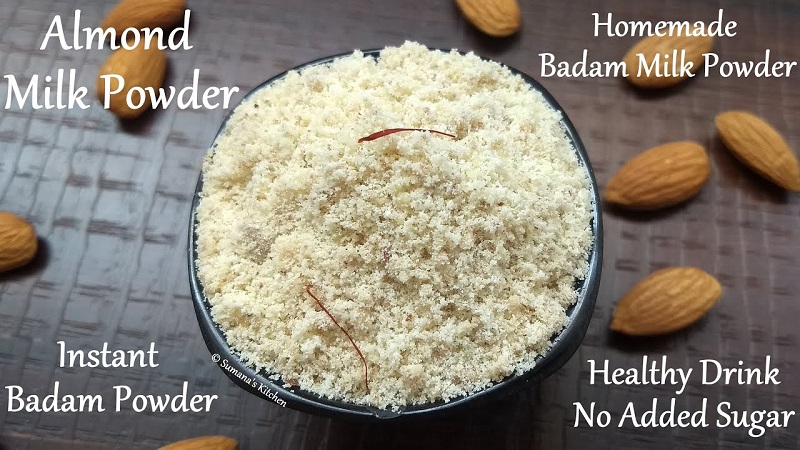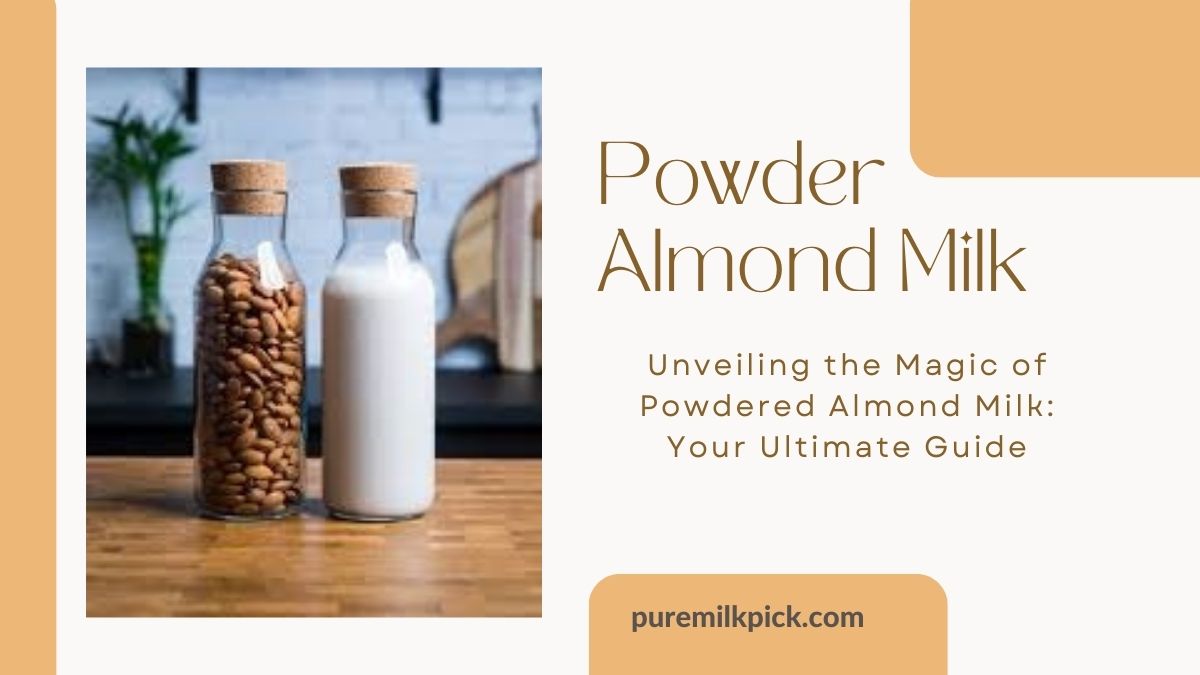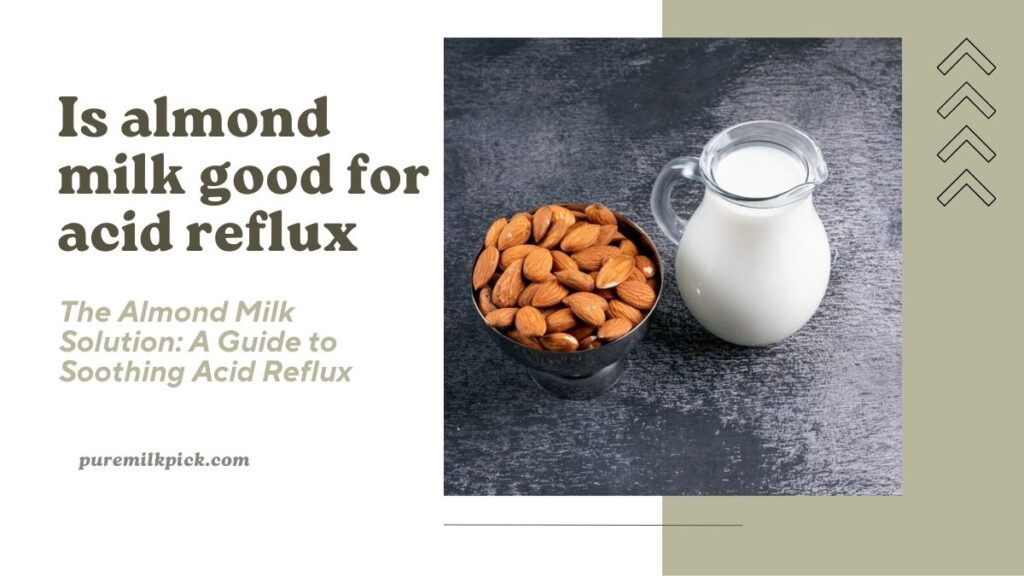Welcome to the plant-based revolution, where alternatives to traditional dairy are taking the world by storm. Among these, powdered almond milk stands out as a versatile and convenient option that caters to the growing demand for plant-based alternatives. In this comprehensive guide, we’ll delve into the world of powdered almond milk, exploring its origins, benefits, uses, and even how to make your own at home. Whether you’re a seasoned almond milk enthusiast or a curious newcomer, get ready to discover the wonders of powdered almond milk.
What is Powdered Almond Milk?
Definition and Manufacturing Process
Powdered almond milk is a dairy-free milk alternative that undergoes a unique manufacturing process to transform liquid almond milk into a powdered form. The process involves removing the water content, resulting in a concentrated powder that retains the nutritional goodness of almonds. This dehydration method not only enhances shelf stability but also reduces the product’s weight and volume, making it an eco-friendly and convenient option for consumers.
Nutritional Content Compared to Traditional Almond Milk
While traditional almond milk is known for its nutritional benefits, powdered almond milk offers some distinct advantages. The dehydration process concentrates essential nutrients, providing a higher nutrient density compared to its liquid counterpart. Additionally, the removal of water contributes to a longer shelf life, making powdered almond milk a practical choice for those seeking a pantry staple with lasting freshness.
Read More: Embracing Nutrient-Rich Goodness to Whole30 Almond Milk
Shelf Stability and Convenience
One of the standout features of powdered almond milk is its extended shelf life, which can be a game-changer for those looking to stock up on non-perishable items. The powder form also translates to reduced packaging waste, aligning with environmentally conscious consumer choices. With its lightweight and compact nature, powdered almond milk is a space-saving and travel-friendly option, making it an excellent choice for those constantly on the go.
Benefits of Powdered Almond Milk
Nutritional Advantages
Powdered almond milk offers nutritional advantages that go beyond the standard almond milk options. Many brands fortify their powdered versions with essential vitamins and minerals, such as vitamin D, calcium, and B12. This fortification not only enhances the nutritional profile of the milk but also addresses common deficiencies found in a plant-based diet, making it a wholesome choice for health-conscious consumers.
Environmental Impact
Choosing powdered almond milk can have a positive impact on the environment. The dehydration process requires less energy compared to traditional methods of preserving liquid almond milk, reducing the overall carbon footprint of the product. Additionally, the concentrated form allows for more efficient transportation, further minimizing environmental impact. Consumers seeking sustainable alternatives can find solace in the eco-friendly attributes of powdered almond milk.
Packaging Benefits
The reduced weight and volume of powdered almond milk contribute to a decrease in packaging materials. As packaging waste continues to be a global concern, opting for powdered alternatives aligns with a commitment to sustainability. Many brands are also adopting eco-friendly packaging, utilizing materials that are recyclable or biodegradable. By choosing powdered almond milk, consumers not only benefit from a convenient product but also actively participate in reducing their ecological footprint.

How to Use Powdered Almond Milk
Reconstitution Process
Using powdered almond milk is a breeze, thanks to its simple reconstitution process. To enjoy a glass of creamy almond milk, all you need to do is mix the powdered form with water. The ratio may vary among brands, so it’s essential to follow the instructions provided on the packaging. Stirring or shaking the mixture ensures a smooth consistency, and within moments, you have a refreshing glass of almond milk ready to be enjoyed.
Culinary Applications
Powdered almond milk isn’t limited to being a beverage; its versatility extends to various culinary applications. In cooking and baking, the concentrated form adds a rich almond flavor to dishes without the excess liquid. Whether you’re making pancakes, muffins, or savory sauces, powdered almond milk seamlessly integrates into recipes, offering a dairy-free alternative without compromising taste or texture.
Smoothies and Beverages
For those who love starting their day with a nutritious smoothie, powdered almond milk is an excellent addition. Its powdered form blends effortlessly with other ingredients, creating a smooth and velvety texture. Adding a scoop of powdered almond milk to your favorite smoothie recipes not only enhances the nutritional content but also contributes a delightful almond undertone to your morning routine.
Choosing the Right Powdered Almond Milk
Reading Labels and Ingredient Lists
When navigating the world of powdered almond milk, understanding how to read labels and ingredient lists is crucial. Look for products with minimal, recognizable ingredients, avoiding unnecessary additives and preservatives. Additionally, check for allergen information to ensure the product aligns with dietary restrictions or preferences. Transparency in labeling empowers consumers to make informed and health-conscious choices.
Comparing Brands
As the popularity of powdered almond milk grows, an increasing number of brands are entering the market. While variety is excellent, it’s essential to compare different brands based on factors such as taste, nutritional content, and ingredient quality. Online reviews and customer feedback can provide valuable insights into the experiences of others, aiding in the decision-making process. Ultimately, choosing a reputable and trusted brand ensures a positive powdered almond milk experience.
Organic and Non-GMO Considerations
For those prioritizing organic or non-GMO options, it’s essential to explore products that align with these preferences. Many brands offer organic powdered almond milk options, ensuring that the almonds used are grown without synthetic pesticides or genetically modified organisms. Choosing organic and non-GMO products not only supports sustainable agricultural practices but also provides a cleaner and more natural alternative.

Addressing Concerns and FAQs
Allergen Information
A common concern among consumers is the potential for allergens, especially for those with nut allergies. Powdered almond milk, derived from almonds, may pose a risk for individuals with nut allergies. It’s crucial to carefully read labels and choose alternative plant-based milk options if allergies are a concern. Some brands also offer allergen-free alternatives, such as powdered oat milk or rice milk, catering to a broader range of dietary needs.
Taste and Texture Compared to Traditional Almond Milk
While powdered almond milk offers numerous benefits, some consumers may wonder about its taste and texture compared to traditional almond milk. The dehydration process can intensify the almond flavor, providing a richer taste profile. In terms of texture, reconstituted powdered almond milk closely mimics the consistency of traditional almond milk, ensuring a smooth and enjoyable experience. The enhanced flavor can even be advantageous in certain culinary applications, adding depth to recipes.
Possible Additives and Preservatives
As with any processed food product, consumers may express concerns about the presence of additives and preservatives in powdered almond milk. While some brands may include stabilizers or emulsifiers for improved texture, many prioritize clean and minimal ingredient lists. Reading labels diligently and choosing products with fewer additives ensures a more natural and wholesome powdered almond milk option. Additionally, opting for organic or artisanal brands often minimizes the use of artificial additives.
DIY Powdered Almond Milk
Making Your Powdered Almond Milk at Home
For those who enjoy a hands-on approach to their food choices, making powdered almond milk at home is a rewarding endeavor. The process involves dehydrating liquid almond milk using a food dehydrator or oven. By controlling the ingredients and skipping unnecessary additives, homemade powdered almond milk allows for a truly customizable and pure experience. This DIY option is not only cost-effective but also provides a creative outlet for those interested in exploring the world of plant-based alternatives.
Cost-Effectiveness and Customization
Creating your powdered almond milk at home comes with the added benefit of cost-effectiveness. Bulk purchases of almonds can be more budget-friendly than regularly buying commercial options. Furthermore, DIY enthusiasts have the freedom to experiment with flavorings and sweetness levels, tailoring the powdered almond milk to individual preferences. Whether you prefer a subtle almond taste or a bolder flavor profile, the DIY approach allows for endless customization.

The Future of Powdered Almond Milk
Market Trends and Innovations
As consumer interest in plant-based alternatives continues to grow, the future of powdered almond milk looks promising. Market trends indicate an increasing demand for innovative products that cater to various dietary preferences and sustainability concerns. Brands are likely to explore new flavors, fortification options, and packaging innovations to stay ahead of the curve. Keeping an eye on emerging trends ensures that consumers can make informed choices and explore the latest offerings in the world of powdered almond milk.
Potential Advancements in Technology and Production
Advancements in food technology may pave the way for improvements in the production of powdered almond milk. From more efficient dehydration methods to enhanced fortification techniques, ongoing research and development can lead to a better overall product. Additionally, innovations in sustainable packaging solutions may further reduce the environmental impact of powdered almond milk, aligning with the global push toward more eco-friendly practices.
Conclusion
In conclusion, the journey into the world of powdered almond milk unveils a myriad of benefits, from its nutritional advantages and environmental impact to its versatility in various culinary applications. Choosing the right product involves careful consideration of labels, ingredients, and personal preferences. Whether you opt for a trusted brand or embark on the adventure of making your own at home, powdered almond milk offers a delicious and sustainable alternative to traditional dairy.
FAQs about Powdered Almond Milk
It’s essential to exercise caution if you have nut allergies, as powdered almond milk is derived from almonds. Some brands offer allergen-free alternatives, such as powdered oat milk or rice milk, to accommodate different dietary needs.
The dehydration process can intensify the almond flavor in powdered almond milk, providing a richer taste profile. In terms of texture, reconstituted powdered almond milk closely mimics the consistency of traditional almond milk.
While some brands may include stabilizers or emulsifiers for improved texture, many prioritize clean and minimal ingredient lists. Reading labels diligently and choosing products with fewer additives ensures a more natural and wholesome powdered almond milk option.



